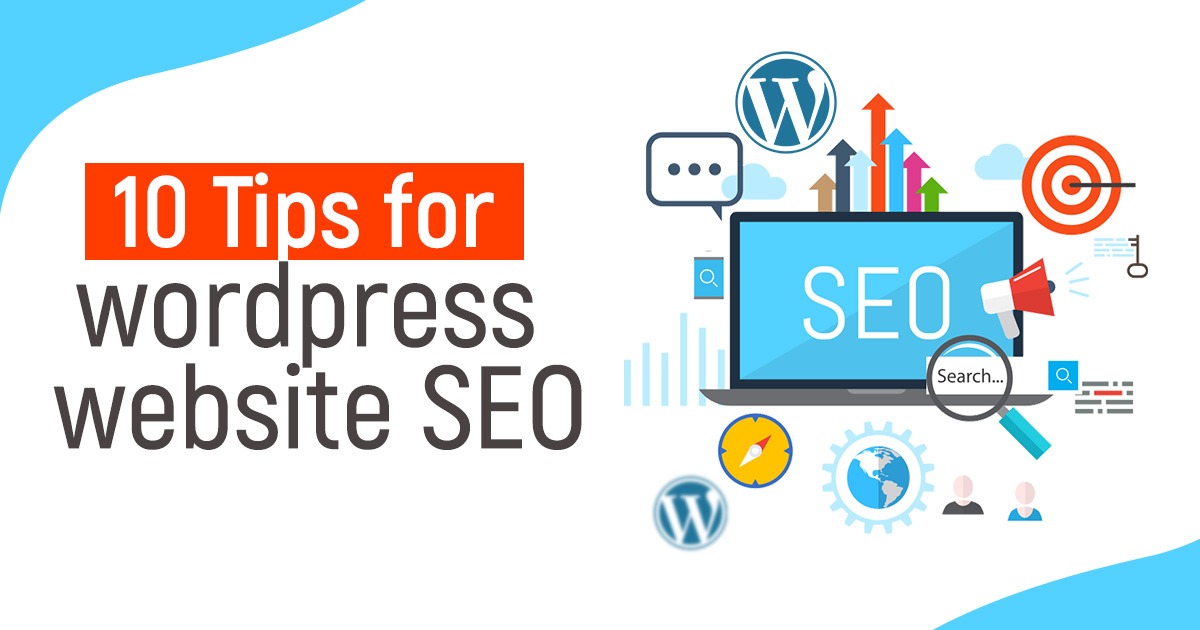10 Tips For WordPress Website SEO
|
Getting your Trinity Audio player ready...
|
10 Tips For WordPress Website SEO
Search Engine Optimization (SEO) is crucial for any website aiming to increase visibility, attract traffic, and rank higher on search engine results pages (SERPs). If you’re using WordPress, you’re in luck because it’s one of the most SEO-friendly content management systems available. Here are 10 tips for WordPress website SEO.

1. Choose the Right Hosting Provider
Your website’s speed and uptime play a significant role in SEO. Selecting a reliable hosting provider ensures your site loads quickly and remains accessible. Fast load times improve user experience and decrease bounce rates, which search engines favor.
2. Choose an SEO-Friendly Theme
Selecting an SEO-friendly theme is the first step in optimizing your WordPress site. A good theme should be responsive, fast-loading, and cleanly coded. Themes like Astra, GeneratePress, and OceanWP are known for their SEO benefits. Ensure your theme is mobile-friendly, as Google prioritizes mobile-first indexing.
3. Install an SEO Plugin
SEO plugins are indispensable tools for WordPress websites. Plugins like Yoast SEO, All in One SEO Pack, and Rank Math offer comprehensive SEO functionalities. They help optimize your content, manage meta tags, create XML sitemaps, and analyze your site’s SEO performance.
4. Use Keywords Strategically
Keyword research is the foundation of SEO. Use tools like Google Keyword Planner, Ahrefs, or SEMrush to find relevant keywords for your content. Incorporate these keywords naturally into your titles, headings, meta descriptions, and content. Avoid keyword stuffing, as it can harm your SEO efforts.
5. Optimize Permalink Structure
Your permalink structure plays a vital role in SEO. By default, WordPress uses URLs that include question marks and numbers, which are not SEO-friendly. Change your permalink settings to include the post name. Go to Settings > Permalinks and select “Post name” for a cleaner, keyword-rich URL structure.
6. Create High-Quality Content
Content is king in SEO. Focus on creating valuable, relevant, and engaging content for your audience. Conduct keyword research using tools like Google Keyword Planner or Ubersuggest to find topics your audience is interested in. Aim for longer posts (1,000+ words) as they tend to rank better in search engines.
7. Optimize Your Images
Images are essential for engaging content but can slow down your site if not optimized. Compress your images using plugins like Smush or ShortPixel to reduce file size without losing quality. Also, use descriptive file names and add alt text to help search engines understand your images’ content.
8. Use Internal and External Links
Linking to other relevant content on your site (internal links) and reputable external sources enhances your content’s credibility and SEO. Internal linking helps search engines understand your site’s structure and index your pages better. External links to high-authority sites show that your content is well-researched and valuable.
9. Improve Site Speed
Site speed is a critical ranking factor. A slow website can lead to higher bounce rates and lower rankings. Use tools like Google PageSpeed Insights or GTmetrix to analyze your site’s performance. Optimize your site’s speed by enabling caching, using a Content Delivery Network (CDN), and minimizing CSS, JavaScript, and HTML.
10. Secure Your Website with HTTPS
Security is a crucial factor for both SEO and user trust. Google prioritizes secure websites and displays a “Not Secure” warning for sites without HTTPS. Obtain an SSL certificate and switch your site to HTTPS to protect user data and improve your SEO rankings. Most hosting providers offer free SSL certificates.
Bonus Tips
Use Schema Markup
Schema markup helps search engines understand your content better, potentially leading to rich snippets in SERPs. Use plugins like Schema Pro or WP Review to add structured data to your WordPress site.
Optimize for Mobile
With the majority of internet traffic coming from mobile devices, having a mobile-friendly site is essential. Use responsive themes, and test your site’s mobile performance using Google’s Mobile-Friendly Test.
Monitor Your Analytics
Regularly monitor your site’s performance using tools like Google Analytics and Google Search Console. Analyze traffic sources, user behavior, and keyword rankings to identify areas for improvement and measure the effectiveness of your SEO strategies.
For more detailed free SEO tips and strategies, visit SEOTips4U and stay ahead in the digital landscape.

 Previous Post
Previous Post Next Post
Next Post